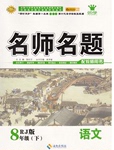题目内容
【题目】 As to the question what is a best age to learn a language, many would rush to the conclusion that it’s best to start young. Though it is true to some extent, now science offers a much more complex view of how our relationship with languages evolves over a lifetime-and there is much to encourage late beginners.
Broadly speaking, different life stages give us different advantages in language learning. As babies, we have a better ear for different sounds s as toddlers(幼儿), we can pick up native accents with astonishing speed. As adults, we have longer attention spans and important skills like literacy that allow us to continually expand our vocabulary, even in our own language. And a wealth of factors beyond ageing—like social circumstances, teaching methods, and even love and friendship—can affect how many languages we speak and how well.
“Not everything goes downhill with age, “says Antonella Sorace, a professor of developmental linguistics and director of the Bilingualism Matters Centre at the University of Edinburgh. She gives the example of what is known as “explicit learning”: studying a language in a classroom with a teacher explaining the rules. “Young children are very bad at explicit learning, because they don’t have the cognitive(认知) control and the attention and memory capabilities,” Sorace says. “Adults are much better at that. So that can be something that improves with age.”
A study by researchers in Israel found, for example, that adults were better at grasping an artificial language rule and applying it to new words in a lab setting. The scientists compared three separate groups: 8-year-olds, 12-year-olds, and young adults. The adults scored higher than both younger groups, and the 12-year-olds also did better than the younger children. They suggested that their older participants may have benefited from skills that come with maturity—like more advanced problem-solving strategies—and greater linguistic experience. In other words, older learners tend to already know quite a lot about themselves and the world and can use this knowledge to process new information.
【1】What is the correct understanding of the underlined sentence in paragraph 1?
A.We should stay up late to learn a language.
B.Late beginners strive hard to learn a language.
C.Late beginners can also learn a language well.
D.We should give much encouragement to late beginners.
【2】According to the passage, language learning is NOT affected by .
A.our inborn abilitiesB.our native accents
C.our cognitive controlD.our attention spans
【3】Why do the adults score higher than both younger groups in the test?
A.They have already known quite a lot about the words.
B.They draw upon their existing knowledge to help.
C.They have been taught the way to learn a language.
D.They are better at learning artificial language rules.
【4】What is the purpose of the passage?
A.To compare and evaluate.B.To examine and assess.
C.To argue and discuss.D.To inform and explain.
【答案】
【1】C
【2】B
【3】B
【4】D
【解析】
这是一篇说明文。文章介绍影响语言学习的因素。
【1】句意猜测题。根据第一段中As to the question what is a best age to learn a language, many would rush to the conclusion that it’s best to start young. Though it is true to some extent, now science offers a much more complex view of how our relationship with languages evolves over a lifetime“对于学习语言的最佳年龄这个问题,很多人会匆忙得出结论:最好从年轻开始。虽然这在某种程度上是正确的,但现在的科学提供了一个更为复杂的观点,来解释我们与语言的关系是如何在一生中演变的。”由此推知,划线句意是“学语言晚的人也可以学好一门语言。”故选C。
【2】细节理解题。根据第二段中As adults, we have longer attention spans and important skills like literacy that allow us to continually expand our vocabulary, even in our own language.“作为成年人,我们有更长的注意力广度和一些重要的技能,比如读写能力,这些能让我们不断扩大词汇量,甚至是母语的词汇。”根据第三段中“Young children are very bad at explicit learning, because they don’t have the cognitive(认知) control and the attention and memory capabilities,” “小孩子在直接学习方面非常糟糕,因为他们没有认知控制、注意力和记忆能力,”由此可知,语言学习受我们的天生的能力、我们的认知控制和我们的注意力的影响,而语言学习不受母语口音的影响。故选B。
【3】细节理解题。根据最后一段中The adults scored higher than both younger groups, and the 12-year-olds also did better than the younger children. They suggested that their older participants may have benefited from skills that come with maturity—like more advanced problem-solving strategies—and greater linguistic experience. In other words, older learners tend to already know quite a lot about themselves and the world and can use this knowledge to process new information.“成年人的得分比两组小孩都高,12岁的孩子也比更小的孩子表现得更好。他们认为,年长的参与者可能从成熟的技能中获益——比如更高级的解决问题的技巧——以及更丰富的语言经验。换句话说,年长的学习者往往已经对自己和世界有了相当多的了解,并且能够利用这些知识来处理新的信息。”由此可知,成年人在测试中的得分要高于两个年轻人是因为他们利用现有的知识提供帮助。故选B。
【4】目的意图题。根据第一段中As to the question what is a best age to learn a language, many would rush to the conclusion that it’s best to start young. Though it is true to some extent, now science offers a much more complex view of how our relationship with languages evolves over a lifetime-and there is much to encourage late beginners.“对于学习语言的最佳年龄这个问题,很多人会匆忙得出结论:最好从年轻开始。虽然这在某种程度上是正确的,但现在的科学提供了一个更加复杂的观点,来解释我们与语言的关系是如何在一生中演变的——还有很多值得鼓励的地方。”由此可知,这篇文章的目的是告知和解释。故选D。

 优学名师名题系列答案
优学名师名题系列答案